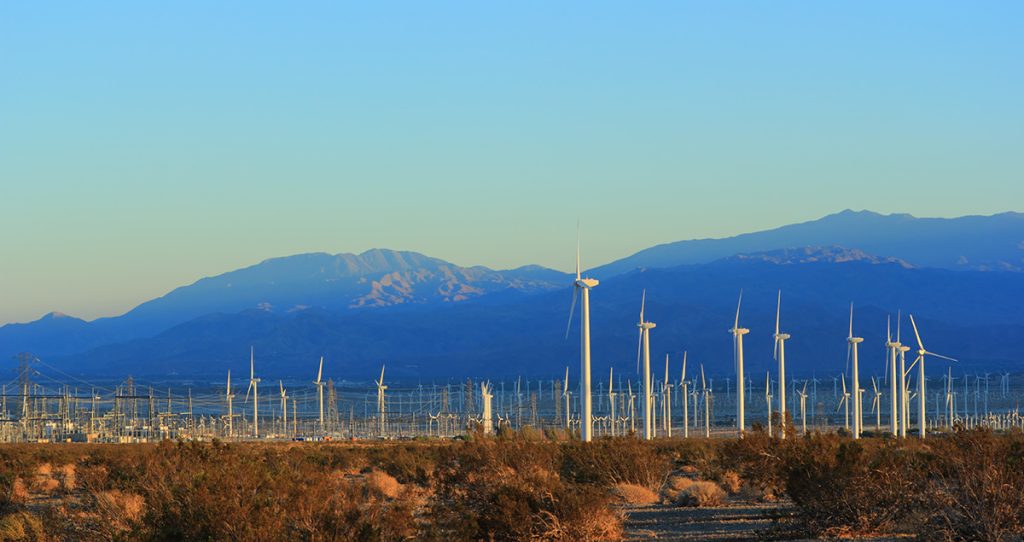
Power from zero-carbon sources made up a full 41% of the U.S. electricity mix in 2022, a record-breaking number that has increased almost every year since 1990.
That mix includes power from nuclear plants, hydroelectric dams, solar and wind. With nuclear and hydro power relatively unchanged for years at about 19% and 10% respectively, the majority of the increase has come from the rapid build-out of solar and wind power, whose costs have plummeted in the past two decades.
The statistics come from the annual Sustainable Energy in America 2023 Factbook, released Wednesday. The Factbook is produced each year by BloombergNEF, a division of Bloomberg LP focused on the transition to a lower-carbon economy, in partnership with the Business Council for Sustainable Energy.
2022 also saw a huge increase in the number of electric vehicles Americans purchased, making up 7.1% of all new cars sold in the United States and bringing the total number of EVs in the country to just shy of 1 million.
The slow but steady increase in renewable energy, which has also become cheaper than most other power sources, means the transition to a carbon-free energy system is now “hard-wired” into the U.S. economy, said Lisa Jacobson, president of the Business Council for Sustainable Energy, which has funded the annual report since 2013.
“Despite high inflation and supply chain issues and interconnection backlogs (in the electric grid), we still saw pretty amazing growth in the capacity of wind and especially solar, despite a challenging business environment,” said Harrison Fell, a professor of resource and energy economics at North Carolina State University.
That shift, known as “the energy transition,” will be turbocharged in the coming years by the passage of the Inflation Reduction Act, which included billions of dollars to help the United States shift to clean power and meet its goals for reducing greenhouse gas emissions.
Carbon dioxide emissions increased 1%
Despite the growing use of renewable energy and electric vehicles, U.S. carbon dioxide emissions still increased by 1% in 2022.
This is due to an overall increase in the amount of energy Americans used, with total U.S. energy consumption rising 3% year-over-year as the economy rebounded from the COVID-19 pandemic. While 2022 numbers were higher, they are still 3% below pre-COVID-19 levels.
Natural gas use rose
Despite rising costs, natural gas demand rose 5.4% in 2022, driven by more demand from the power sector and rising liquified natural gas exports, especially to Europe.
“The Russian invasion of Ukraine had been the driver for this and that doesn’t seem to be ending anytime soon,” said Fell.
In 2022, natural gas produced 39% of U.S. electricity, up from 38% in 2021. A decade ago, it stood at 31% but has since taken over much of the generation earlier provided by coal.
Coal continues to fall as a part of the US energy mix
Electricity produced by burning coal slid to 19% of the U.S. energy consumption in 2022.
Just 10 years ago, coal provided 37% of U.S. electricity. The shift has come as coal has become more expensive compared with natural gas and renewables.
Renewable energy continues to get cheaper
The cost of 1 megawatt-hour of electricity from coal was on average $100 in the second half of 2022, compared with $58 for a combined cycle natural gas plant, the Factbook says. The cost to produce the same amount of electricity from utility-scale solar was on average $50 and the cost for onshore wind was on average $43.
What is carbon-neutral energy? Is it different than renewable energy?
Carbon-neutral energy is energy that is produced without emitting greenhouse gases into the atmosphere. It includes both renewable energy sources plus nuclear power, which while not renewable, also doesn’t emit greenhouse gasses.
A subset of carbon-neutral energy is renewable energy, which is electricity produced by fuel sources that renew themselves and do not diminish when humans tap them for power. These include electricity from solar panels, wind turbines, hydroelectric dams and a small amount of what’s known as biomass, which is burning wood, crop waste, or garbage.
In 2022, 41% of U.S. electricity was produced by carbon-free sources. Energy from renewable sources produced 23% of U.S. electricity in 2022.
Electric vehicle sales up 50% in 2022
Sales of electric vehicles surged 50% in 2022, bringing the nation’s fleet of battery-powered and plug-in hybrid vehicles to an estimated 982,000 cars.
Due, in part, to rising gas prices, demand for EVs swelled in 2022, making them 7.1% of all new cars sold in the United States.
That’s a tremendous increase in just two years said Corey Cantor, a senior EV analyst for Bloomberg NEF.
“If we were having this conversation in 2020, passenger EV sales were only 2.4% of the market,” he said. California, the nation’s largest seller of EVs, is even higher. “In California, it was close to 19% of all new cars. That’s serious, it’s a big market,” he said.
Tesla remained the most popular EV, making up half of the new vehicle sales. However, Ford, Stellantis’ Peugeot, VW, Volvo’s Polestar, BMW and GM also posted strong numbers.


























